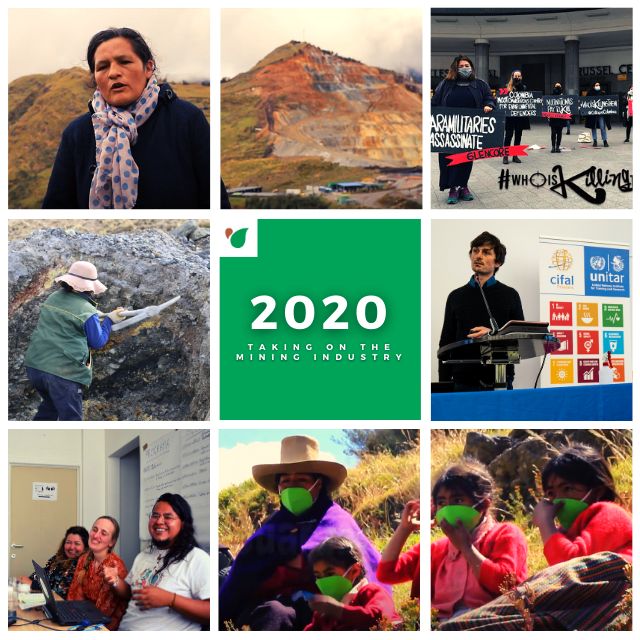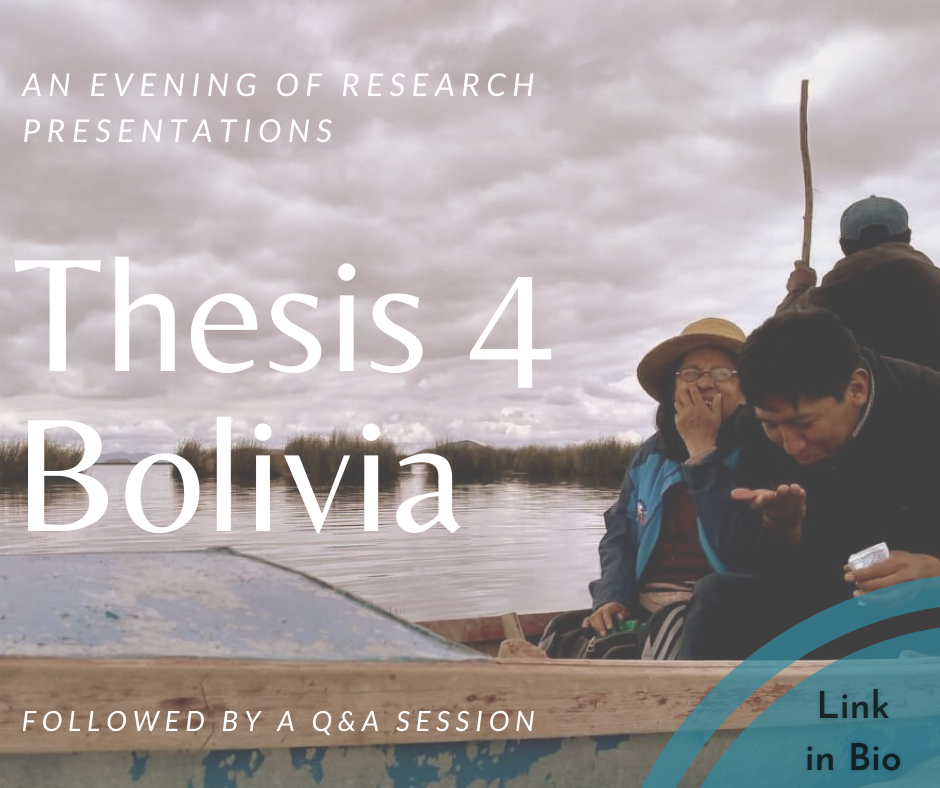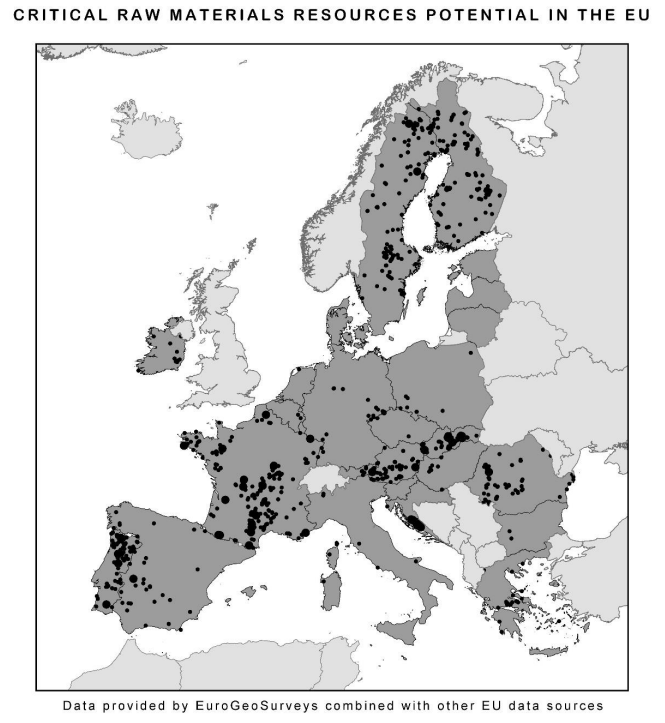The El Tingo case
The El Tingo case
Water pollution caused by toxic mining waste has radically transformed the regional ecosystem, poisoning the land.
Author – Giacomo Perna
During one of his visits to Macondo, Melquiades and his gypsies presented to the people what they declaimed to be the eighth wonder of the world of the wise Macedonian alchemists. It was a magnet. By means of this device, José Arcadio Buendía hoped to be able to dig up all the gold in the earth by simply dragging his ingots through the village. If only it really worked, for the world would have been spared centuries of pollution caused by mining. If it did, the lives of the people of El Tingo might be better today.
The community of El Tingo is currently without water. It’s such a controversial situation. Even though the area is rich in rivers and streams, nowadays every spring and water source is in a critical state of contamination, according to university studies and CATAPA’s report. Pollution has reached exasperating levels: it is so high that plants are burned due to the excess acidity of the waters.
The El Tingo community was born as a peasant community. The local economy has always been based on crops and livestock. The current situation prevents these activities from being carried out without risk. As a consequence of water contamination, cases of disease have increased significantly, dangerous amounts of heavy metals have been found in the blood of the inhabitants, and previously unseen malformations have started to appear in newborn animals. And it all happened because of the mining action that affected the territory

Every water source in the region is contaminated. Lack of resources and income afflict the area. Socio-economic growth promises made by the mining companies did not materialize.
The mining history of the region of El Tingo goes back many years. Environmental liabilities from mining projects of yesteryear still afflict the territory, threatening the well-being of local flora and fauna. Among them is, the San Nicolás project, started in 1972, whose remains represent a still open wound that scars the local environment.
The entire geographical area is seriously affected by excavation and mineral processing. The main reason is that the plans to minimize and neutralize the effects of the toxic waste were – and, according to the local community, still is – not respected and, today, the inhabitants of the area suffer from a lack of resources and income, in addition to directly experiencing the harmful effects of the mining waste.

The community of El Tingo is located in the district of Hualgayoc, in the region of Cajamarca. The area is rich in raw materials and minerals, which does not favor the well-being of the communities. In fact, El Tingo is located between two active mining projects that directly influence the development of life in the community: the Cerro Corona project, started in 2005 by the South African mining company Gold Fields, and the Tantahuatay project, started by the Peruvian company Coimolache, affiliated with the Peruvian company Buenaventura, which discovered the mine in 2010.
These companies have settled in the territory to exploit the huge mineral reserves present in the subsoil: gold, silver and copper. Initially, both companies arrived in the area promising improvements and development, signing social agreements and agreeing to promote socio-economic growth. Unfortunately, they did not live up to their words.
The curious thing is that Peru has a mine closure law. According to regulation passed in 2003, the state obliges companies that own mining projects to ensure the protection of the environment and to cease their activities in areas where mining action could cause environmental risks, but neither the government nor the companies have made any effort to respect – and enforce – this law.
The grass burns due to the high acid concentration of the waters. People and animals suffer from the diseases caused by the environmental pollution of the mining.
It is also worth mentioning that the region is subject to periods of heavy rainfall. On several occasions these rains have caused the tailing dams to overflow, leaking mining waste into the surrounding pastures and water basins and generating catastrophic consequences. An infamous example, is the case of December 2018, where a tailings spill caused the death of 17,000 trout present in the fish farm ‘La trucha de oro’.
The problem of pollution does not only affect the El Tingo area. The streams that traverse the territory flow into other rivers. Among them is the El Tingo-Maygasbamba river, which flows into the Amazon river and then crosses the continent to the Atlantic, carrying its poisons for thousands of kilometers.
On the economic side, the promises made by both Coimolache and Gold Fields company were not kept. According to the community, the agreements stipulated were not respected. Despite the promise not to bring foreigners into the region, companies soon began to hire outsiders to work in the mines. In addition, local workers often suffered violations of their labor rights: firing a local worker seems so much easier than firing a foreigner. Furthermore, the promises of prosperity did not materialize and no improvements were made to the roads, which are in a critical state. Even the local architecture suffers from the consequences of mining. Excavations to expand the mines are carried out through continuous detonations in El Tingo, which over time affects the integrity of community buildings. As a result, cracks and scratches populate the walls of many houses, jeopardizing the structural stability of the homes.
Local growth was not improved. The mining presence caused conflicts and social tensions.

The local community has resisted against the injustices from mining in the territory, evidenced by the social tensions that have been documented since 2008. Indeed, the people of El Tingo have risen up against mining servitude and exploitation. Protests and strikes have taken place over the years, demonstrating the commitment of the local community to defend their land and water.
The people of El Tingo have been organizing themselves autonomously in opposition to the mining industry and have also asked for assistance to publicize their struggle and finally be heard. It was for this reason, that CATAPA became actively involved in the territory together with its partner Grufides, conducting dozens of interviews and collecting water samples from the springs. The tests demonstrated a high level of contamination of the rivers and streams that cross the area. Through the interviews collected, a documentary was produced about the case of El Tingo, to give voice to the testimony of the local community. In addition to this, a webinar and a social media campaign were organized. Today, Grufides’ lawyers continue to fight alongside the communities legal representatives, to support the fight for justice.
The El Tingo history is a tale of unfulfilled promises and abuses. The pressure from the central economy is pushing the development of underdevelopment in the region, relegating the community to a situation of irreversible dependence. The area has become an oasis for mining extraction, a locus amenus where the West found the answers to its expansionist demands. It is hard to believe that such abuses are taking place today. The situation in which the inhabitants of El Tingo find themselves is intolerable, and CATAPA’s aim, together with its allies and the community, is to bring justice to a people who for decades have suffered the ravages of dispossession.






















